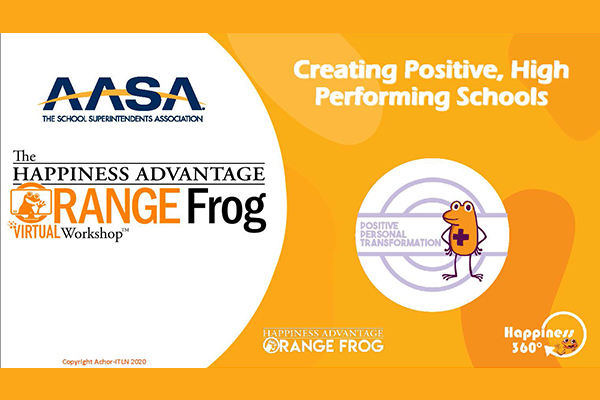Building a Culture of Trust
January 12, 2012
Nancy Golden, 2011 Oregon Superintendent of the Year
E-mail contact: deb.jolda@springfield.k12.or.us
| |
|
Nancy Golden |
I believe the best leaders draw participants into the process of decision-making, and this, in turn, builds a strong culture of collaboration and trust. The trust that we build in our community not only helps us to obtain strong buy-in and support in our successes, but also provides the necessary supports to navigate through the difficult challenges and issues that we face.
In an effort to ensure positive learning opportunities for students, Springfield Public Schools has designated building a culture of trust, internally and externally, as one of our district’s five-year goals. In 2006, our strong relationship with our community allowed us to pass a $42.7 million dollar bond measure, with a margin of victory that was nearly 14%. During the last three years, this high level of trust proved beneficial as we faced the most potentially devastating financial crisis in our history, requiring us to cut approximately $30 million from our budget.
Holding a deep belief that the key to reaching each and every student and effectively leading the district is by building a culture of trust within the community, Springfield Public Schools set out to earn the confidence of our stakeholders through the following four steps:
- Create a Vision
Shortly after beginning my superintendency, we launched a sixth-month conversation with the community to determine the knowledge and skills that students must possess to be successful in the 21st century. In an effort to sharpen our vision, we implemented the Springfield Quality Education Model (SQEM) process, conducting a significant outreach campaign to identify the community’s vision of a quality education. We talked to more than 1,000 people and used existing infrastructures such as the city council and Rotary Clubs, meeting with 30 different groups representing approximately 11,250 community members.
After hearing a variety of perspectives, common themes began to emerge. After these meetings, more than 200 participants attended a community forum to clarify local needs and set priorities for our new strategy. A newly formed SQEM Central Committee then created a model to deliver the community’s vision of quality education.
Once the SQEM was adopted, our vision emerged, and our pathway was clear. It is a living document that continues to guide us as we implement our community’s vision. We use it as the lens through which we measure our achievement, success, and improvement as well as a blueprint to guide our future goals.
- Communicate with Stakeholders
Communication with stakeholders is a cornerstone of my leadership philosophy. Striving to deliver transparent leadership, I have made tremendous efforts to keep community, staff, parents and students abreast of district issues, both successes as well as challenges. Through the use of community forums, written publications and informational meetings we have collected valuable stakeholder feedback, which has greatly assisted us in making efficient decisions. Whether addressing budget reductions, developing a district vision, passing a school bond measure, or working with the associations to negotiate contract agreements, the strong culture of trust we have built in our community and our district has helped us to make decisions that have been well received and accepted by our stakeholders.
Active listening is a key component of our communication. Last year we conducted a process to elicit feedback and input from our community as we evaluated each of our school sites and examined the relationship of educational delivery, costs and facility needs in search of budget cutting options. Our Board organized the process, which included high engagement from external stakeholders, with a citizen-led community group of 33 community and staff representatives. The committee synthesized their findings, creating a comprehensive report for the Board that summarized their extensive work and provided a resource of detailed information. In the end, a decision was made to close four schools and consolidate two schools over a two-year period, a resolution that closely aligned with the committee’s recommendation.
Although any decision to close or consolidate a school is rarely popular, it was well accepted by the community. I believe that this was due, in great part, to the extensive efforts we have directed toward building relationships and communicating with our community and district.
- Connect with Your Staff and Know Your People
To increase my leadership capacity, I challenge myself to become familiar with the work lives of district employees, job shadowing with certified and classified staff throughout the school year. Whether I show up to substitute teach in a third-grade classroom, change oil under the hood of a school bus or serve breakfast on the cafeteria line, I am committed to staying in touch with staff and actively working to understand their daily responsibilities. Having served as a teacher for many years and, in an effort to maintain a vivid memory of the challenges, I also make it a point to observe every new teacher’s classroom at least once each year.
Taking the opportunity to connect with staff, and do their job, has increased their confidence in my ability to make decisions. They demonstrate an increased appreciation for the decisions that I make, trusting that I have a better sense of what they do and knowing that my understanding of their responsibilities play a key role in the decision-making process.
- Collaborate with Your Community
I believe being engaged in community activities assists me in communicating the successes as well as the needs of our district to other leaders in our local area. Partnerships with the community are critical to achieving the district’s vision and Springfield Public Schools have cultivated collaborations with many community organizations. One partnership with our local university ensures that our kids are college and career ready. Another, with Willamalane Park and Recreation District, creates a heightened awareness of after-school programs among our students and parents.
We have also made efforts to ensure our students are ready to learn on their first day of kindergarten through a collaboration with local partners known as Promise Neighborhoods. Whether we are leveraging resources through networking, recruiting an in-house artist at one of our elementary schools or organizing a snack pack program in a high-need school, we are constantly working with our community to serve our students in order to reach our district vision, “Every student a graduate prepared for a bright and successful future.”
These are challenging times in which to serve as an educational leader. Despite our best efforts and planning, we will always face new difficulties as we lead our district. Over the years, through many challenges, the investment we have made in building a culture of trust with our staff, our students and our community, has played a beneficial role in our ability to provide our students with the best possible educational environment.
Advertisement
Advertisement
Advertisement
Advertisement


